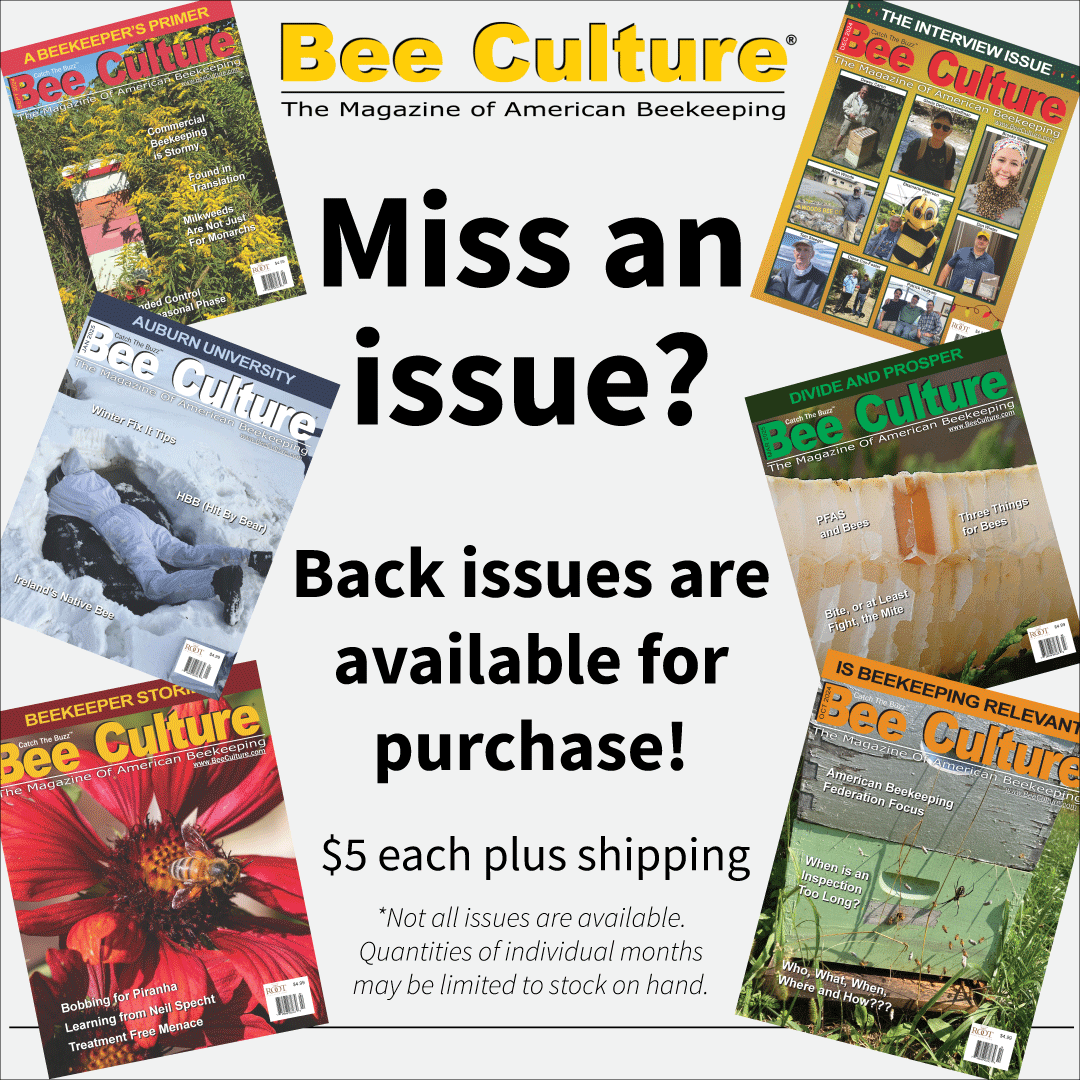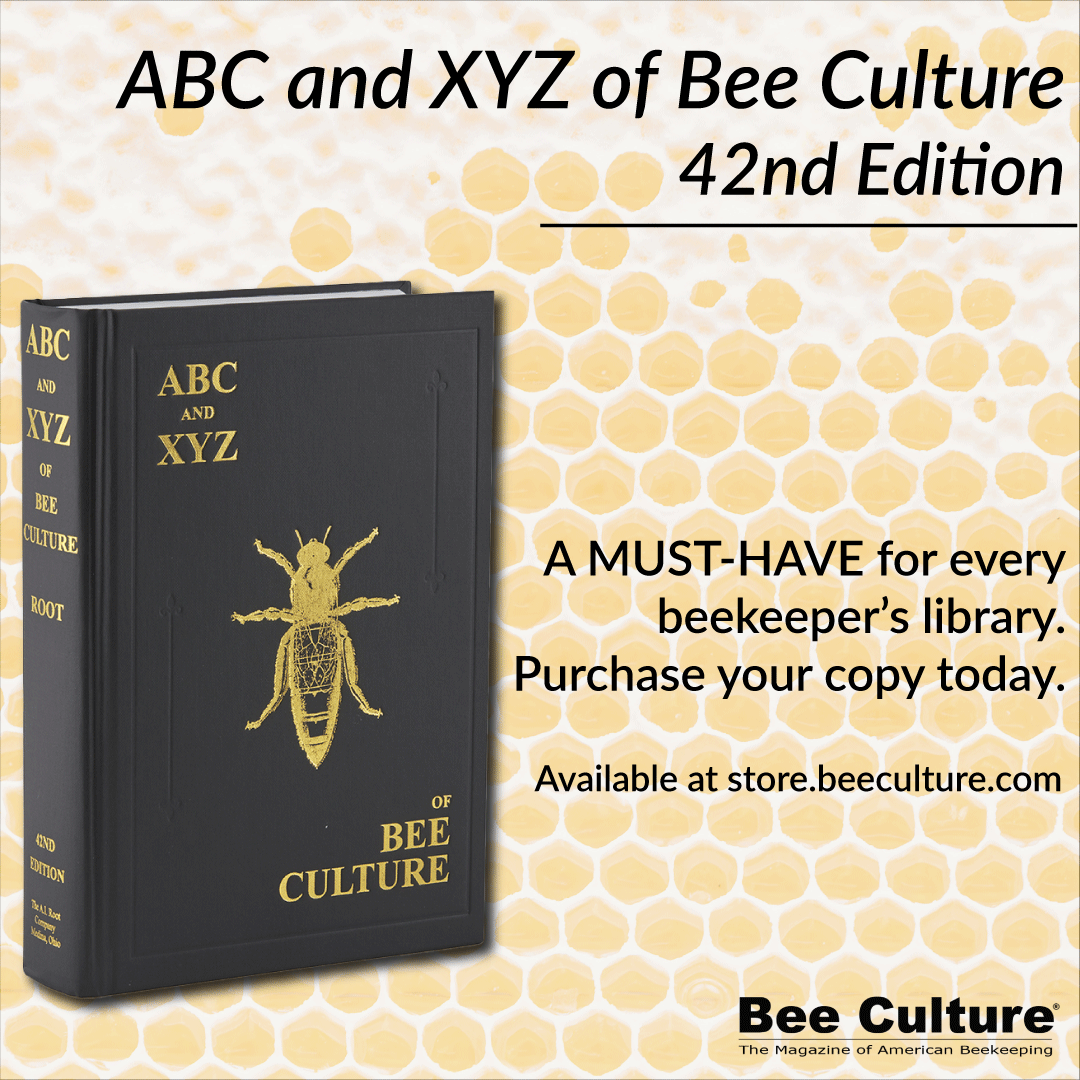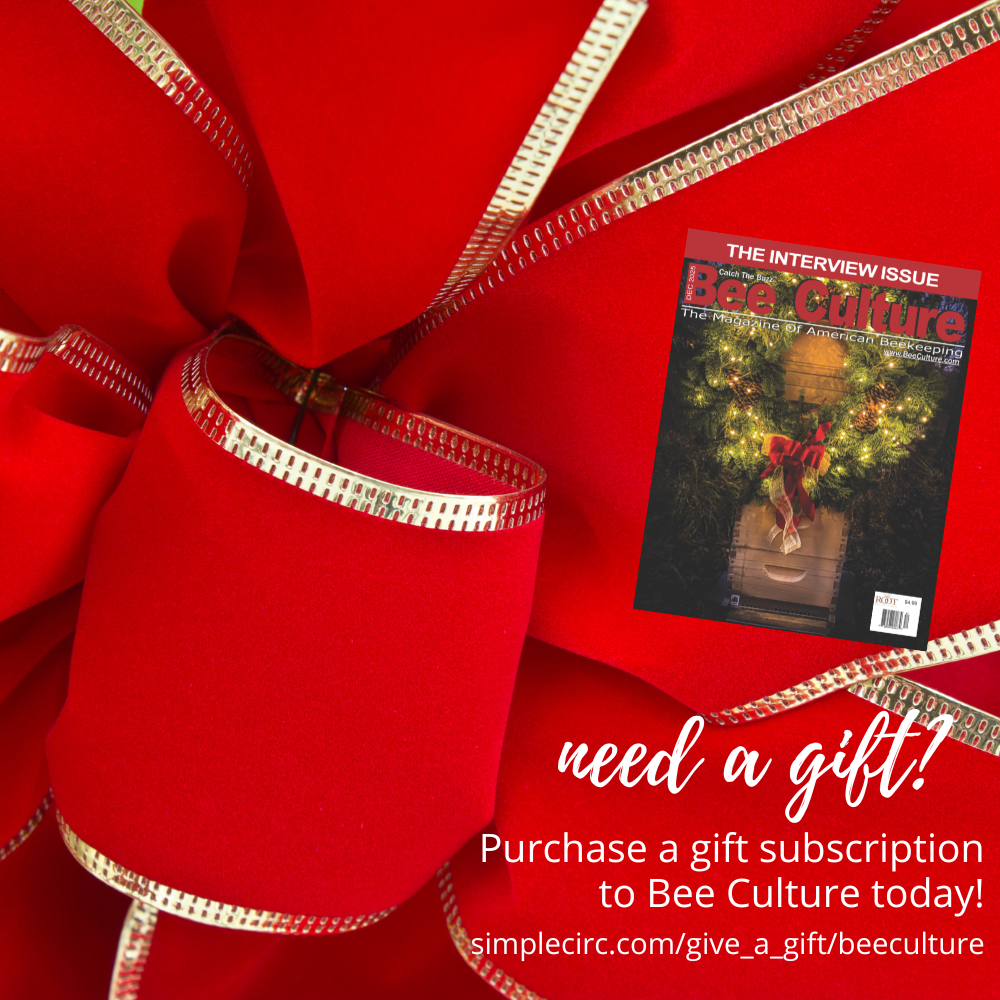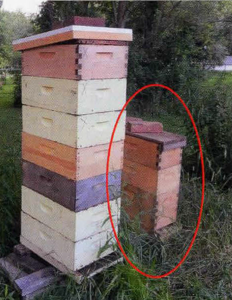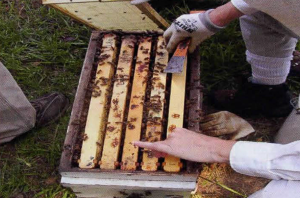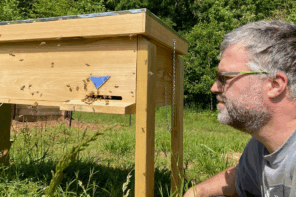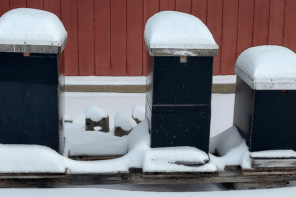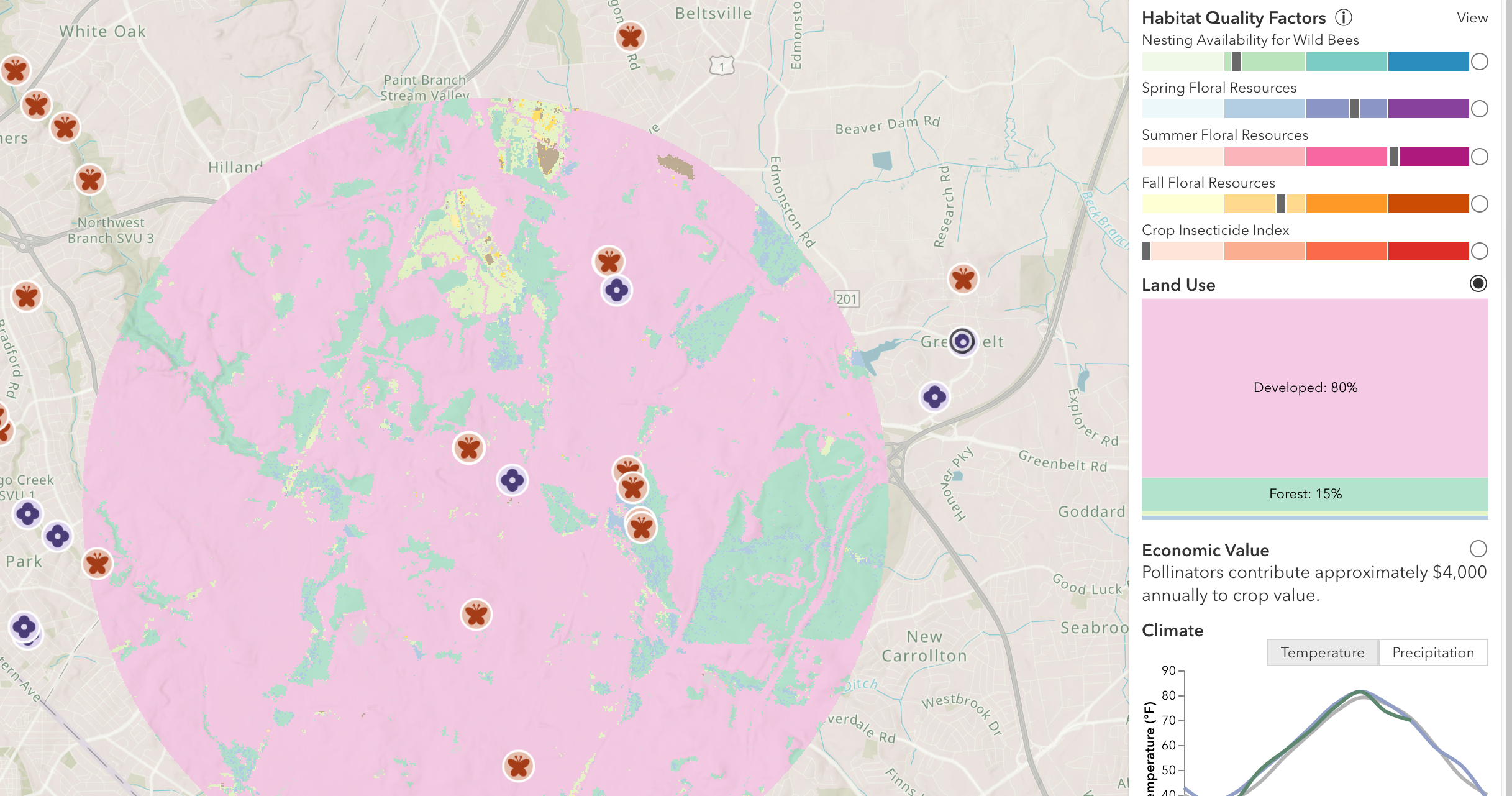By: Phil Craft
You can’t get them at Walmart, so where do you get bees?
Each year I look forward to Spring in my apiary. With the first warm days and the first opening flower buds, the bees emerge from their Winter seclusion and the air is filled with the buzz of their activity. The sweet tang of wax and nectar fill, not only the hives, but the whole bee yard. I see foragers returning, the sacs on their legs bulging with yellow, orange, and red pollen grains. Moving amongst the hives, lit smoker in my hand, hive tool in my back pocket, veil and straw hat on my head, I’m filled with contentment by the sights and sounds and smells. But the ease and joy I feel there are the result of years of work and experience – and a few frustrations. I hope that all of you reading this who are interested in beekeeping will come to know the same satisfaction one day, but first you have to make a start.
There are several ways of acquiring bees. Catching swarms was a common method in the not too distant past, but parasites have drastically reduced the number of unmanaged colonies, and anyway, it’s not a job for beginners. Some people inherit hives of bees, and I know one would-be beekeeper who claims that, deterred by the initial cost of setting up hives, he married into them. Most people purchase them in one of the following forms:
An established hive from a beekeeper
I almost never recommend this for beginners. By late Spring, a healthy, existing hive will contain over 40,000 bees and it requires active management from day one – a task for which most new beekeepers are not prepared and which can quickly become overwhelming. They may have to deal with swarming almost immediately, and established hives can have existing disease or parasite issues which require diagnosis and decisions about treatment. Also, a novice may not be a good judge of the condition of the woodenware in a used hive – a significant part of its cost. The only situation in which it makes sense for a novice to buy an established hive is if he or she has a close friend or relative who is an experienced beekeeper willing to commit to spending a lot of time acting as a mentor. Otherwise, it’s better to begin with baby steps.
A nucleus hive
More commonly known as nucs, they can be thought of as starter hives, smaller in size and with fewer frames and bees than an established colony, but complete with all the elements of a hive. They are usually available from beekeeping suppliers and some beekeepers make and sell their own. A nuc is created by removing several frames of drawn comb containing stored honey and pollen, eggs, and developing bees (brood) from a strong hive and placing them in a box half the size of a regular hive body along with bees and a queen. A good nuc producer will maintain the nuc for a short time – usually two or three weeks before offering it for sale – in order to ensure that the queen is laying and that the young colony is off to a good start. The new beekeeper transfers the frames and bees to an empty, full size box where it will grow into a mature colony in a couple of months. The great advantage of a nuc bought from a reputable source is that it already contains a proven and accepted queen along with eggs, brood, and some food stores, but with only about a quarter of the bees of an established hive. However, in purchasing a nuc new beekeepers need to keep in mind that they are buying a small, but fully functioning colony. That includes any pre-existing disease or parasite problems and entails management issues similar to those of a full-sized hive, only with fewer bees. Also the quality varies greatly and the supply- especially of local nucs – is limited. Even though they are usually not available until late in the Spring, they are typically ordered in advance and, by the end of January, it is difficult to find any that are not already committed.
Package bees
Starting a hive with package bees is starting from scratch. Producers, usually commercial beekeepers in the southern U.S., make them up by shaking frames of bees from a strong hive into a wooden shipping box with screened sides – the package. A queen in a protective cage is placed inside, along with a can of sugar syrup for consumption by the bees during shipping. The beekeeper, after picking the package up from a supplier or receiving it through the mail, installs both bees and queen in a new hive containing only frames and foundation. Once in their new home, the bees free the queen from her cage by eating through a sugar candy plug. If all goes well, she begins laying eggs as soon as the bees have drawn out enough comb and, about three weeks later, new bees begin to emerge and the colony gradually builds up its population. Packages are the most common way of acquiring bees. They offer the advantages of being cheaper than nucs and readily available, having fewer pre-existing pest and disease issues, and allowing a beginner to wade in gradually instead of immediately plunging in over his head. He has the opportunity of watching the process of development unfold from the first comb drawn and egg laid without having to cope with all the management issues inherent in an existing hive. However, packages present their own challenges. The process of setting up a hive from a package is a more complicated than for a nuc and, because they do start from scratch, don’t expect honey the first year. Whereas transporting bees is always stressful for them, transit times and extremes of temperature during shipping take an even greater toll on packages. If possible, pick them up from the seller yourself or look for sources that truck the bees to you directly. Many beekeeping groups purchase in bulk and share the cost of expedited shipping. The most common problems with package bees involve the queen. For a variety of reasons, bees sometimes reject and kill her which can be frustrating and confusing for a new beekeeper (or even an experienced one). Prompt action to acquire a replacement queen will remedy the situation, but it takes vigilance to recognize it in time.
Finding a good, reputable source is important when buying either nucs or packages. An experienced, successful beekeeper is the best source of advice. Ask members of your local beekeeping association for recommendations.
Getting ready
When ordering either packages or nucs, consider asking for a marked queen. A dab of bright paint on her upper thorax makes her much easier to locate, especially for a new beekeeper. It also calls the beekeeper’s attention to a hive that has superseded (replaced the old queen with a new one) or swarmed, because the replacement will not have a mark. Such a hive bears watching to make sure that the new queen is fertile and laying. Marks also indicate the age of the queen because different years are represented by different colors. The supplier may charge an extra couple of dollars for this service, but it is worth it.
On the day that you install your bees, have all your new equipment ready, including your new hive. Wood surfaces that are exposed to the weather should already be painted, but not frames, inner cover, or inside surfaces of hive bodies. The hive should be set up on a stand at your pre-selected location. Wear your veil and gloves and coveralls if you plan to use them. You will also need your smoker – lit, and your hive tool. When installing package bees, a small pocket knife or screw driver is handy for removing the cork separating the bees from the candy plug in the queen cage. Weather conditions are important. Do not attempt to install bees in the rain or after dark and make sure that the temperature is above 50°F.
Installing nucs
Nuc boxes are usually wood, but are sometimes made of weatherproof cardboard. Beekeepers typically refer to them by the number of frames they contain, five frame nucs being the most common. Make sure you have enough additional frames with foundation on hand to fill out a ten frame brood box. When you first bring home the new nuc, l suggest setting it immediately adjacent to your new hive and opening the entrance to allow the bees to fly. This will make them a little calmer when you open the lid. You can delay installation for several days if the weather is not ideal, but keep the nuc very close to the new hive location. On first leaving home in a new location, bees orient themselves in order to find their way back again. After the initial flight, the setting is familiar and they do not reorient, so they become lost and confused if the nuc or hive is moved more than a foot or two.
When you are ready to install the nuc, gently lift the cover with your hive tool. As you do so, apply a few puffs from the smoker along the edge of the nuc and allow air movement, to carry the smoke across the top of the open box. Then use the hive tool to gently remove one of the end frames and place it in the new hive box. One by one, gently move the remaining frames, maintaining the same order they had in the nuc box. l emphasize gently for a reason. On one of these frames is the most important bee in the hive: the queen. Rough handling could injure her. Also slow gentle movements help keep the bees calm. Place the frames close together in the middle of the hive box and add frames of foundation at the edges until the box is full and the frames are evenly spaced. It is important to install all the frames the box was designed to hold: ten frames for a standard hive body. If you leave out a frame, the bees will fill the space with extra layers of comb, making removal of the frames difficult. After all the frames are in place, you can gently shake the nuc above the new hive to dislodge the bees that are left. Don’t worry about getting every one; if you tilt the nuc box against the hive entrance, any remaining bees will move of their own accord. Put the cover on the new hive and you are finished. You can retrieve the nuc box a couple of hours later.
Installing a package
Packages are slightly more complicated to install than nucs, but not difficult; new beekeepers do it every year. They typically come with instructions, and many package vendors conduct installation demonstrations at the point of pick up. How-to videos abound on YouTube, but not every self-proclaimed expert is reliable. Instead, look for videos on U.S. bee lab websites or those of some beekeeping associations. Be sure to read the directions that come with the package before starting.
There are a few things you need to know, however, even before you get your package. Unlike nucs, packages are not mini hives. They are designed to house bees only for short periods, and the longer bees are contained in them, the poorer their chances of success. Ideally, packages should be installed as soon as you get them – certainly within 48 hours – but in case weather or other circumstances make immediate installation impossible, you should have a plan for storing them. Choose a cool (50 – 60°F), dry, dark place, out of the sun, but not too cold. I often bring them inside. It doesn’t bother my family, but the dog never got used to it. You should offer the bees a little sugar syrup when you get them home. (Read about syrup under “feeding” below.) A can of syrup with holes punched in the bottom is included in the package, but if the holes are too small the bees can’t extract the syrup. If they are too large, it could drain out prematurely. Even if they are just right, there are many more bees than holes. To make sure they all have enough to sustain them, put some syrup in a spray bottle and spray a small amount onto the screen on the side of the package. DO NOT wet the bees. You want syrup on the screen, not on them. Spray a small amount, wait a few minutes for the bees to consume it, then apply a little more. If you store them overnight you can feed them again in the morning, and later the next day. Give them some more a few minutes before installation. Though package bees are normally pretty calm, letting them fill up with syrup just before you open the package calms them even more.
Feeding your new hive
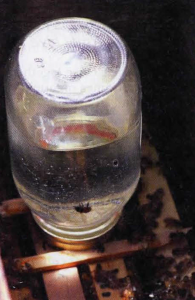 Whether you start with nucs or packages, you will need to feed your new hive in the beginning. For this purpose, beekeepers use either high fructose corn syrup or simple sugar syrup as a honey substitute. High fructose corn syrup can be purchased from beekeeping suppliers. DO NOT use the corn syrup sold in grocery stores; it is not the same thing. If you prefer to make your own simple syrup, just mix equal amounts of granulated sugar and hot tap water and stir until the sugar is dissolved. There is no need to heat the mixture on the stove. Nucs should have some stored honey when you purchase them, so they won’t need feeding prior to installation. Many types of feeders are available on the market: entrance feeders, frame feeders, top feeders. Like many beekeepers, I make my own top feeder using a glass jar with small holes punched in the metal lid. Placing it on some small sticks on top of the inner cover allows the bees access to the holes in order to suck syrup from the jar. I cover it with an empty hive body.
Whether you start with nucs or packages, you will need to feed your new hive in the beginning. For this purpose, beekeepers use either high fructose corn syrup or simple sugar syrup as a honey substitute. High fructose corn syrup can be purchased from beekeeping suppliers. DO NOT use the corn syrup sold in grocery stores; it is not the same thing. If you prefer to make your own simple syrup, just mix equal amounts of granulated sugar and hot tap water and stir until the sugar is dissolved. There is no need to heat the mixture on the stove. Nucs should have some stored honey when you purchase them, so they won’t need feeding prior to installation. Many types of feeders are available on the market: entrance feeders, frame feeders, top feeders. Like many beekeepers, I make my own top feeder using a glass jar with small holes punched in the metal lid. Placing it on some small sticks on top of the inner cover allows the bees access to the holes in order to suck syrup from the jar. I cover it with an empty hive body.
I suggest making the syrup continuously available until the bees have drawn new comb and stored some syrup or nectar. That means regularly checking and refilling whatever feeder you have decided to use for at least the first week or two. After that, feed intermittently until most of the comb is drawn out in two deep boxes (the original box and the second one you added after the first was nearly drawn out). At that point the colony should be self-sufficient and you can remove the feeder. In addition to nectar or syrup, honey bees need pollen, especially when rearing brood. New packages contain zero stored pollen, and nucs may have only a small amount. During the first few weeks when the bees must simultaneously rear young brood and accumulate food stores while at the same time building the new comb in which these activities take place, they will benefit from a pollen substitute. A couple of protein patties from a beekeeping supplier, placed on the top bars of the hive under the inner cover, will sustain them until they have drawn enough comb to store natural pollen.

